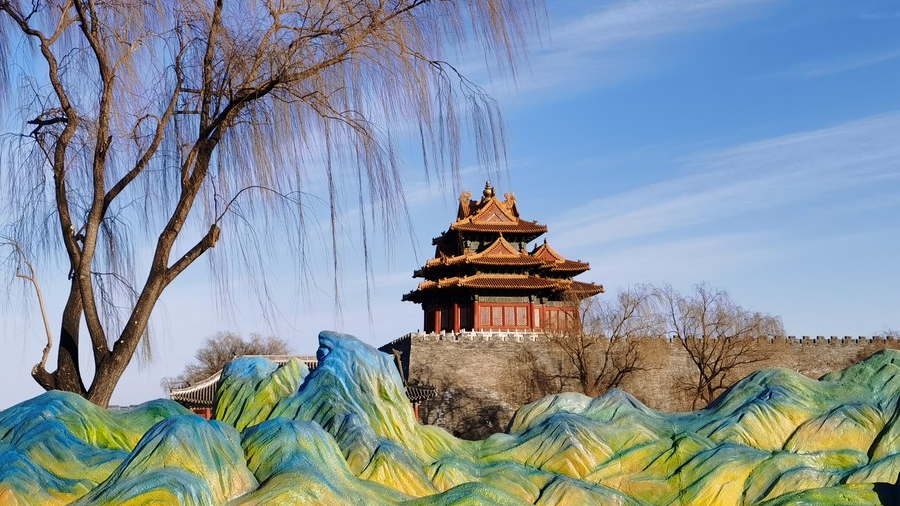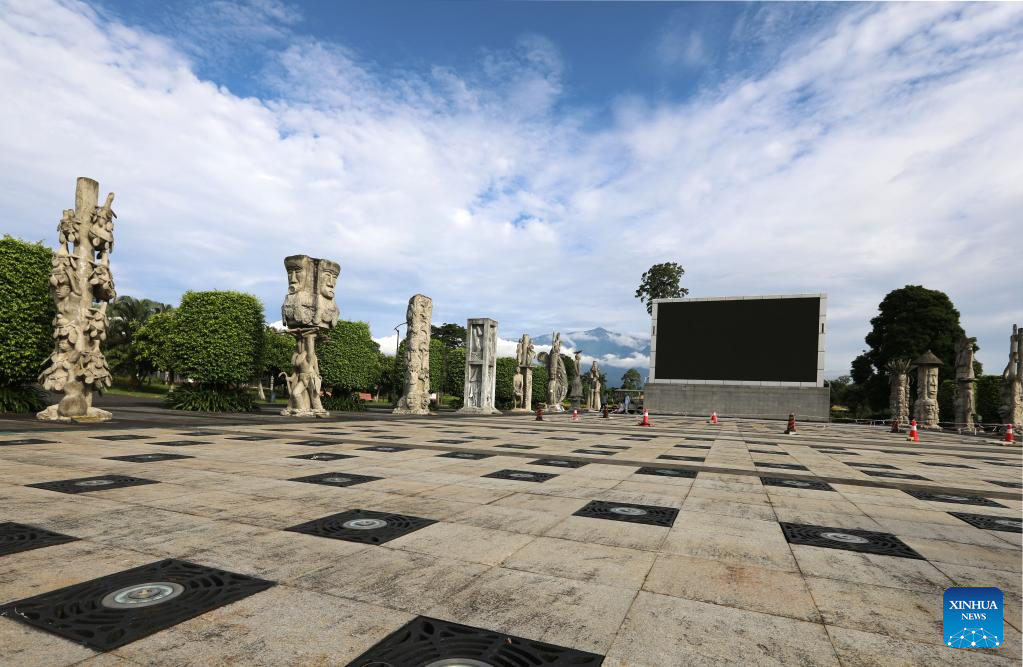
The photo shows a turret of the Palace Museum in Beijing, capital of China, February 3, 2022. /Xinhua
The photo shows a turret of the Palace Museum in Beijing, capital of China, February 3, 2022. /Xinhua
Editor's note: Chen Ruijun, a special commentator on current affairs for CGTN, is a member of the China Writers Association and a Distinguished Research Fellow of the China Institute for Innovation and Development Strategy. The article reflects the author's opinions, and not necessarily the views of CGTN.
Throughout the thousands of years of human civilization, architecture emerges as the most telling reflection of economic and social development. Guided by local circumstances, people of different regions and ethnic groups have shaped societal principles relative to their era and leveraged their distinct talents to craft unique and remarkable architectural designs.
Chinese architecture makes up an integral component of the global architectural landscape. Enduring over 3,000 years, it's a testament to the ingenuity and wisdom of successive generations in China. The quintessence of Chinese civilization – harmony between strength and gentleness, interplay of reality and illusion, interdependence of emotion and reason, fusion of rites and music – is vividly manifested in architectural forms.
This is evidenced by the principles of macro balance in planning, clarity and order in stylistic norms, rhythmic harmony in group composition, a human-centric approach to spatial design, the profound symbolism embedded in the structures, and the use of garden designs that mirror nature's own artistry.
Together, these elements demonstrate the harmonious coexistence between man and nature and between man and society. They also orchestrate a symphony of Chinese architectural masterpieces, eloquently celebrating the diversity of human civilization, championing shared human values, and serving as an indelible testament to the richness of Chinese culture.
As China pursues its modernization in a uniquely Chinese way to promote the great rejuvenation of the nation, the creative transformation and innovative development of its time-honored culture is integral to its overarching mission. China's path to modernization is a path of peace, with cultural cross-pollination, integration and mutual learning among different ethnic groups.
While maintaining its distinct style, Chinese architecture has always absorbed beneficial elements from foreign cultures, becoming an invaluable repository of global architectural wisdom. Examples can be seen in the Bund International Architecture Exhibition in Shanghai and the Qingjing Mosque in Quanzhou, a coastal city in south China's Fujian Province. Both are landmarks featuring inheritance and innovation of diverse civilizations. They are an outstanding epitome of international cultural exchange and cooperation.
In a similar vein, Chinese architecture is also appreciated, welcomed and popular overseas. With the irreversible deepening of globalization today and in the future, the melding and mutual learning of architectural styles becomes an important story of the era. Chinese architecture, along with its cultural underpinnings, will inevitably be deeply involved in this intercultural dialogue and play a constructive role.
Reflecting on the explorations and practices of recent years, Chinese builders have always focused on the integration of architecture and culture, while expressing the concepts of traditional Chinese culture in the language of architecture, leading to many success cases. For example, the Olympic Center in Leshan City, southwest China's Sichuan Province, stands as a testament to the fusion of natural and cultural elements. Based on the geographical feature of the confluence of two rivers, it captures the spirit of water and form of mountains with a pursuit of green and low-carbon development, to create a verdant and festive urban landscape.
The "Warm Nest Project of Zoige," a dormitory for primary schools in Zoige County in Sichuan Province, is a pure industrial project. The team overcame plateau-related challenges to build a heating system with zero emissions. The project blended seamlessly with Tibetan culture, achieving a modern standard of 23-degree temperature difference between indoor and outdoor spaces.
Over the years, Chinese builders have conscientiously shouldered the responsibility of promoting architectural culture, for example, by promoting the traditional Chinese culture along the Belt and Road, showcasing China's image, and allowing the world to feel a credible, admirable and lovable China up close.

A scene of Malabo National Park in Malabo, Equatorial Guinea, June 12, 2023. /Xinhua
A scene of Malabo National Park in Malabo, Equatorial Guinea, June 12, 2023. /Xinhua
Firstly, Chinese builders offer typical works demonstrating China's architectural culture. In 1983, the first Chinese-style garden in Europe, the "Garten von Duft und Prach," was built in Munich, Germany. There are Chinese style gardens constructed by Chinese garden companies in the UK, the U.S., Africa and other regions.
Particularly, Malabo National Park in Equatorial Guinea, located in Central Africa, is a garden project that exemplifies China's technology, equipment and management capabilities. It has actualized the dream of building a Chinese-style garden in Africa, perfectly embodying the diversity of world civilizations, the pursuit of shared human values, the inheritance and innovation of diverse civilizations, and the international cultural exchange and cooperation. These works allow our distant African brothers and sisters to visit Chinese gardens and appreciate the exquisite and inclusive Chinese culture in their own countries.
Secondly, they engage in overseas architectural planning that lets architecture speak again, telling architectural stories, and building cultural consensus.
Thirdly, they build for happiness. Efforts have been made to showcase the beauty of both Chinese and international architecture, to extend the influence of Chinese architecture overseas, and to demonstrate cultural confidence through architectural design.
As Chinese President Xi Jinping proposed, we are ready to work together with the international community to open up a new prospect of enhanced exchanges and understanding among different peoples and better interactions and integration of diversified cultures. Together we can make the garden of world civilizations colorful and vibrant. This is China's answer to the question of how to pursue modernization. It is a brilliant chapter in the story of human civilization. Chinese builders have also found their own glorious responsibilities and mission in this endeavor.
The China Institute for Innovation and Development Strategy also contributed to this article.
(If you want to contribute and have specific expertise, please contact us at opinions@cgtn.com. Follow @thouse_opinions on Twitter to discover the latest commentaries in the CGTN Opinion Section.)